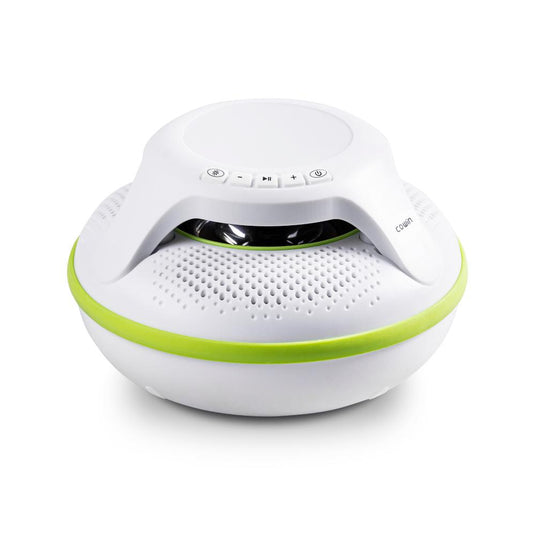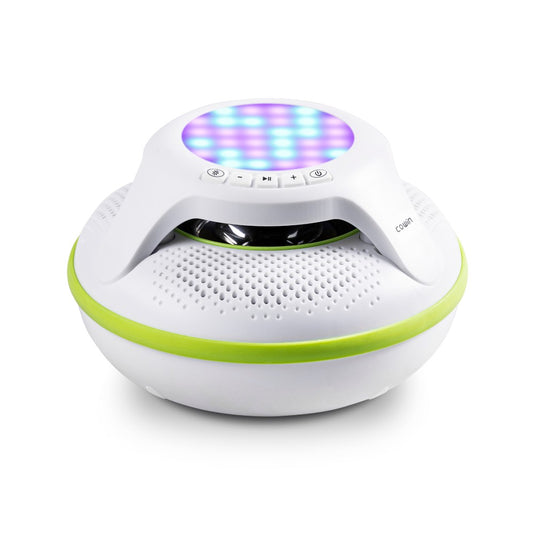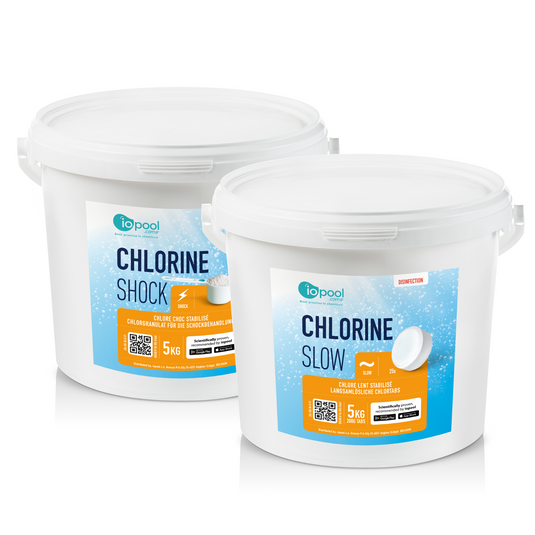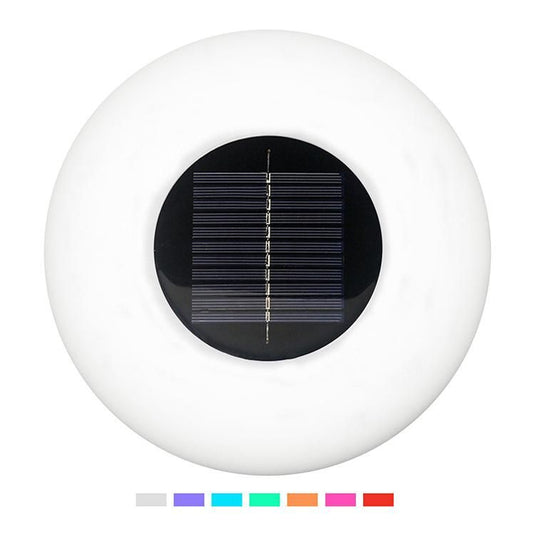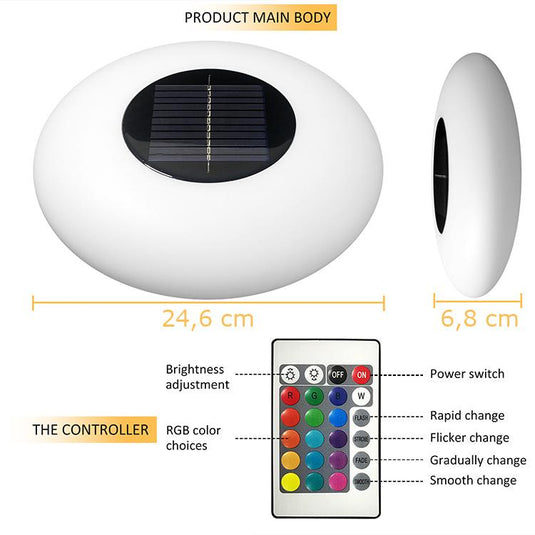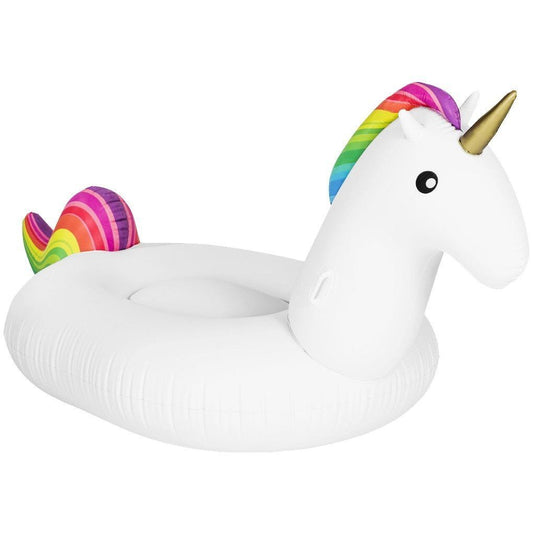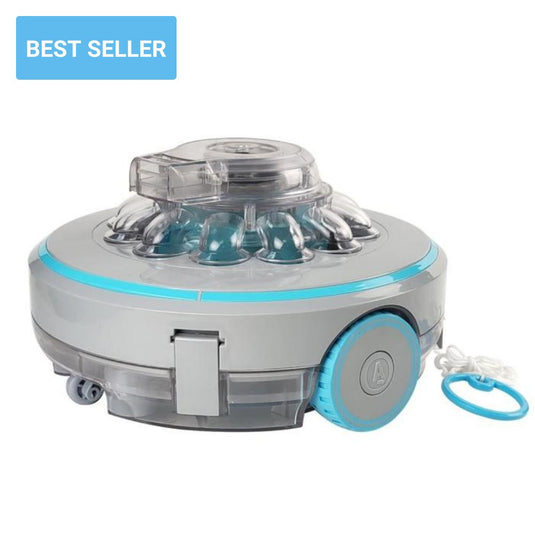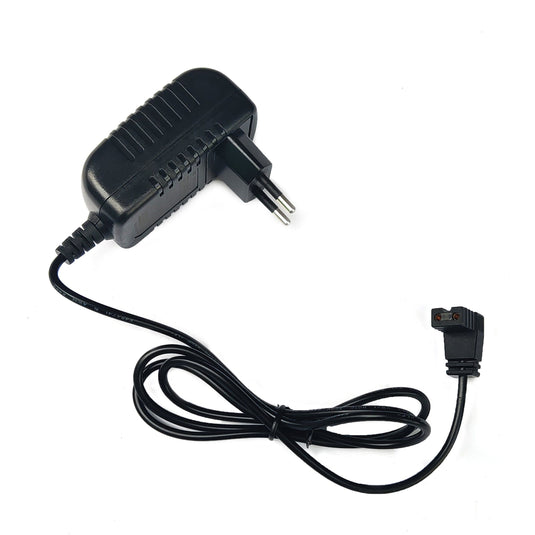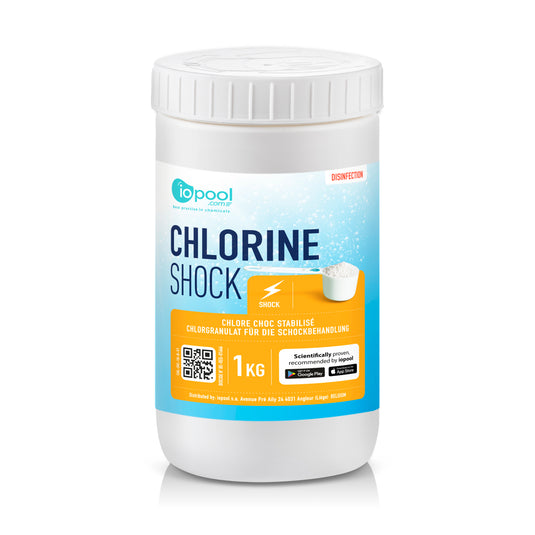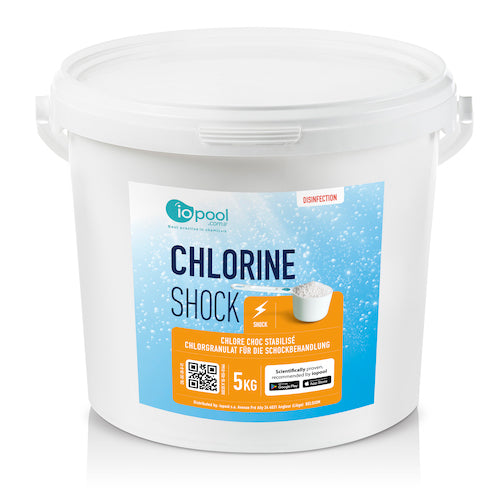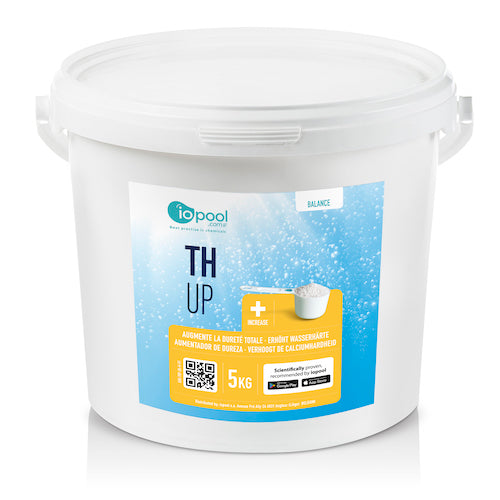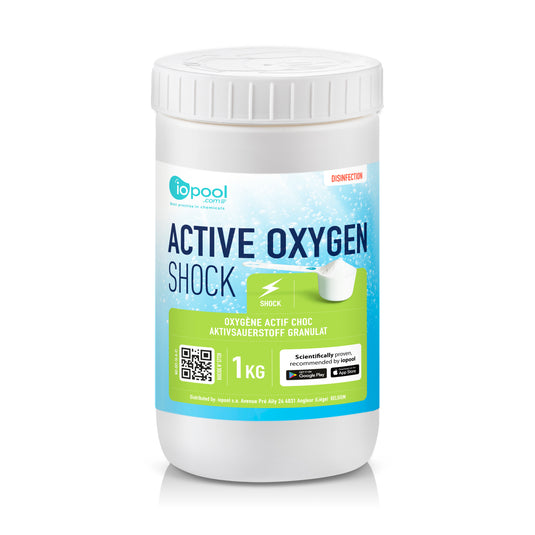Active oxygen: your future ally?

Treating a swimming pool with activated oxygen is a trending alternative to using traditional chemicals such as chlorine. Active oxygen is a non-chlorine compound that can be used to disinfect pool water and remove organic impurities.
Definition
Active oxygen is a powerful oxidant used to disinfect pool water. It works by eliminating bacteria, algae, fungi and other contaminants present in the water. Depending on the brand, active oxygen comes in several forms: pebbles, granules, powder/salts, liquid. The form does not affect its effectiveness.
✅ Some of its notable strengths are:
- Environmentally Friendly: Activated Oxygen breaks down into pure oxygen molecules making it more environmentally friendly than chlorine which can leave chemical residue. It is also less likely to cause pollution problems or create potentially harmful substances.
- Effective against contaminants
- No formation of chloramines, unlike chlorine: Chloramines are chemical compounds that form when chlorine reacts with organic impurities such as sweat, urine or cosmetics. These chloramines can cause unpleasant odors and irritation. With active oxygen, there is no formation of chloramines, which can help maintain more pleasant, odor-free water.
How Does It Work ?
First, it causes oxidation: When active oxygen is added to pool water, it quickly dissolves and turns into hydroxyl radicals, which are powerful oxidizing agents. These hydroxyl radicals attack the microorganisms present in the water, destroying their cell membranes and rendering them inactive.
The destruction of contaminants then takes place: The hydroxyl radicals from the active oxygen react with organic contaminants in the water, such as bacteria, algae and organic matter. This chemical reaction breaks down contaminants, rendering them harmless and making them easier to remove through the pool's filtration process.
Hydrogen peroxide (H2O2) is the main active substance of active oxygen. It is a chemical compound made up of two hydrogen atoms and two oxygen atoms. Hydrogen peroxide is produced industrially by various methods, including the oxidation of anthraquinone or the electrolysis of water.
It is important to note that the hydrogen peroxide used in swimming pool active oxygen products is usually stabilized to ensure longer shelf life and safer use. Stabilizers such as borate or phosphate compounds can be added to maintain the stability and effectiveness of hydrogen peroxide.
Types Of Active Oxygen
The most common is the liquid form. Oxygen is then hydrogen peroxide, also called hydrogen peroxide (it is a derivative) concentrated at 35%. 1 liter releases 130 liters of active ingredient, but it will mask the chlorine or bromine if there is any.
The solid form (pebbles, granules, powder) is a potassium monopersulfate which makes it possible to reactivate chlorine by recombining certain chloramines into active chlorine. It is this form of active oxygen that iopool offers (only in France)! 👍
It requires the addition of stabilizer, activator and flocculant in parallel but there are product lines which are combined with other chemical molecules for an all-in-one treatment. In particular, they make it possible to maintain its effectiveness at high temperatures.
Control
To track the oxygen level in the water, there are dedicated reagent strips and liquids.
If active oxygen is used as the main disinfectant product, the installation of a dosing pump or an automatic dispenser is strongly recommended. As much for testing the level of active oxygen present in the water as for regulating its diffusion. It must be continuous, like any pool disinfectant treatment.
The concentration of active oxygen must not exceed 10 mg/L.⚠️
For who ?
For pools from 20 to 40 m3, active oxygen can be used as the only disinfectant. It is practical when you are allergic to chlorine, bromine or want to avoid it with children. Using less or no chlorine is also beneficial for the environment.
Note that the filtration should ideally run continuously, with a treatment based on active oxygen. This is an additional cost that may further justify using it as a continuous disinfectant treatment only in a small pool.
This question arises especially for larger pools. And here again, there are active oxygen treatment kits suitable for pools of more than 20 m3.
Active oxygen and chlorine ✅
The active oxygen (in granules) bound to the chlorine allows its regeneration. Indeed, by attacking chloramines, active oxygen transforms them into active chlorine. It also attacks and destroys organic matter. This is why it is most often used as a shock treatment, with chlorine.
To Conclude
Want to avoid chlorine smell and irritation? Or simply act on your scale for the environment? Iopool offers active oxygen in granules here! (only available in metropolitan France, 2023).

